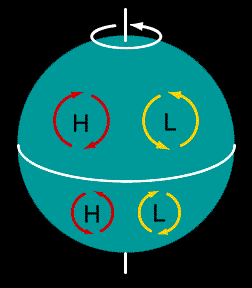Click on image for full size
Windows to the Universe original image
Cyclones and Anti-cyclones
The Earth's spin causes the
wind to curve. This is called the
Coriolis Effect. The wind in the northern hemisphere curves to the right
and the wind in the southern hemisphere curves to the left.
When the wind swirls counter-clockwise in the northern hemisphere or
clockwise in the southern hemisphere, it is called
cyclonic
flow. When the wind swirls clockwise in the northern hemisphere
or counter-clockwise in the southern hemisphere, it is called
anticyclonic flow. An example of cyclonic flow is the
flow around a low
pressure area while an example of anticyclonic flow is
the flow around a high pressure area. A
hurricane is a cyclone.
You might also be interested in:

How did life evolve on Earth? The answer to this question can help us understand our past and prepare for our future. Although evolution provides credible and reliable answers, polls show that many people turn away from science, seeking other explanations with which they are more comfortable.
...more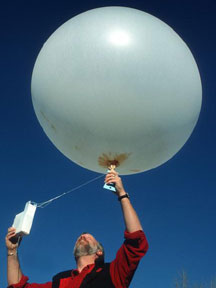
When you "blow up" a balloon, you are adding pressure to the inside of the balloon. That makes the rubber in the balloon stretch. The balloon gets bigger. Pressure is an idea scientists use to describe
...more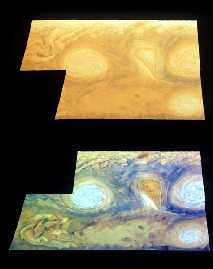
White ovals are found all over Jupiter, not just where the classic ovals were born. See if you can find some of the others for yourself in pictures in the image archive. There are so many white ovals that
...more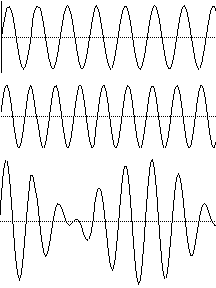
Sound travels in waves. When the waves hit your ear, you hear a sound. Have you ever noticed the waves in the ocean? They go up and down, up and down. Sound waves act the same way. The number of times
...more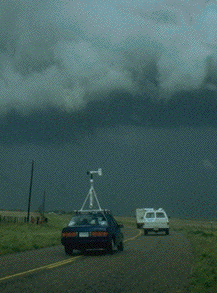
Storm chasers are different than storm spotters. Chasers travel around Tornado Alley looking for severe storms and tornadoes. Sometime there are dozens of chasers following the same storm. All kinds of
...more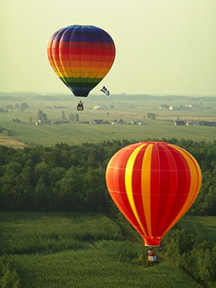
A tornado is the most destructive natural storm. You might think that this also means that tornadoes are the strongest storms; that's not the case. In fact, a thunderstorm which produces a tornado can
...more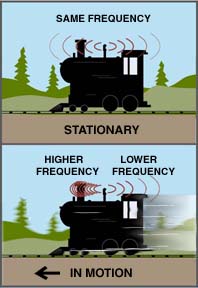
The Doppler effect was named after Christian Doppler, who first came up with the idea in 1842. He learned that sound waves would be pushed closer together if the source of the sound was moving toward you.
...more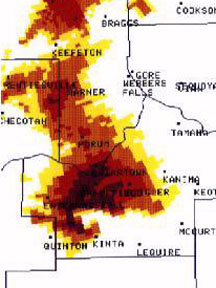
Tornadoes are hard to forecast. They don't last very long so there's not much time to figure out what's happening. Also, scientists don't really know how they form. They know what the weather's like when
...more


